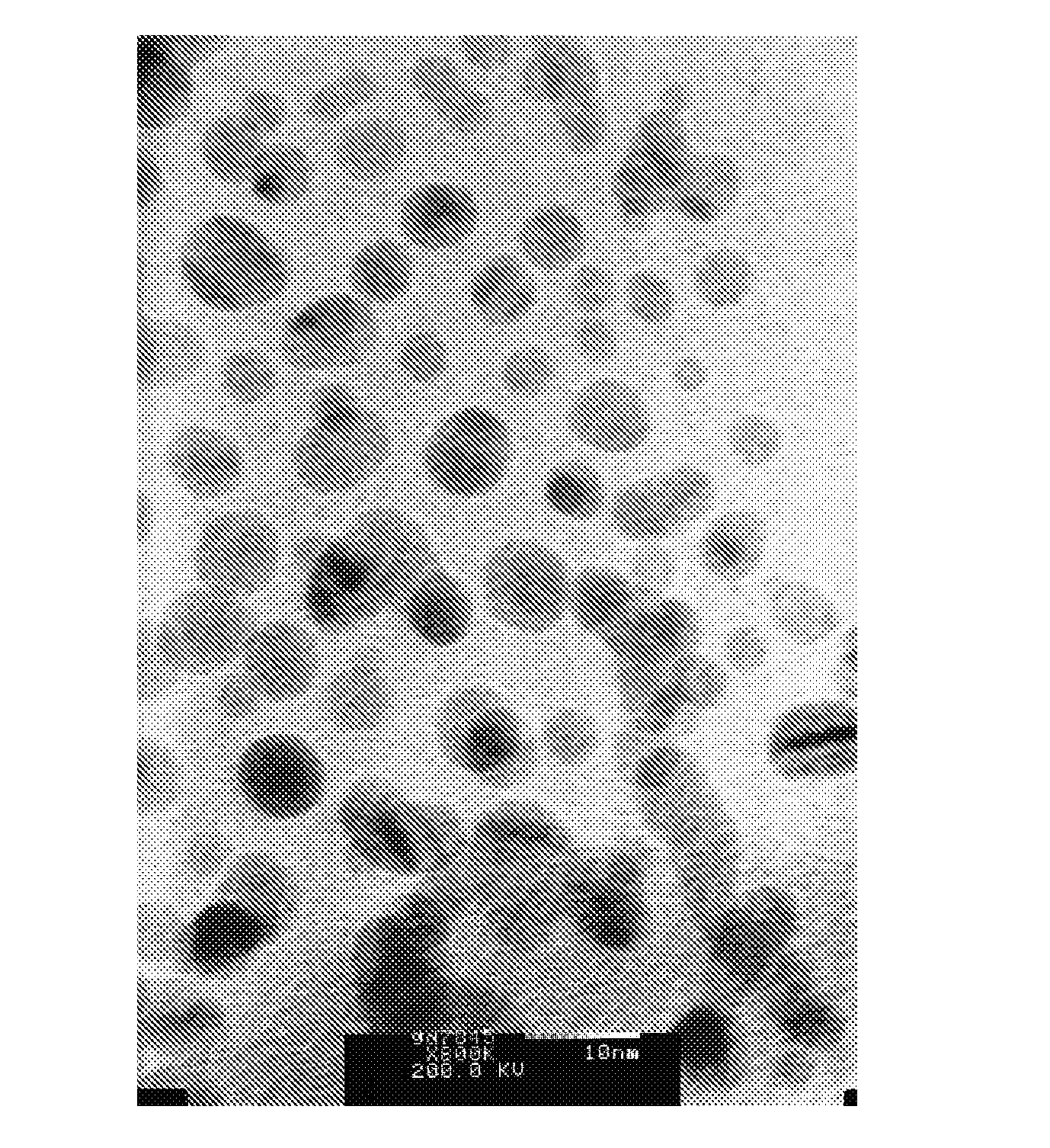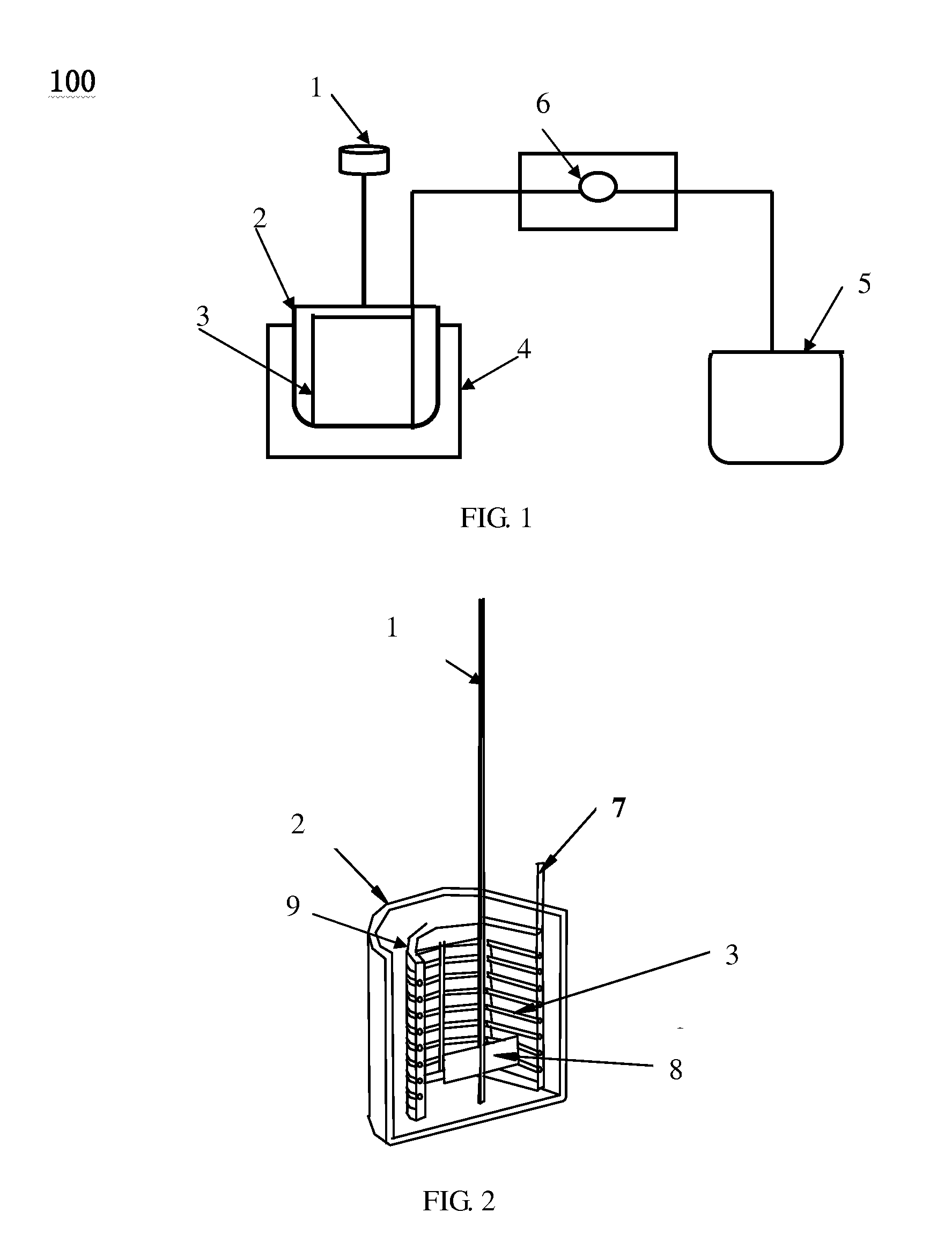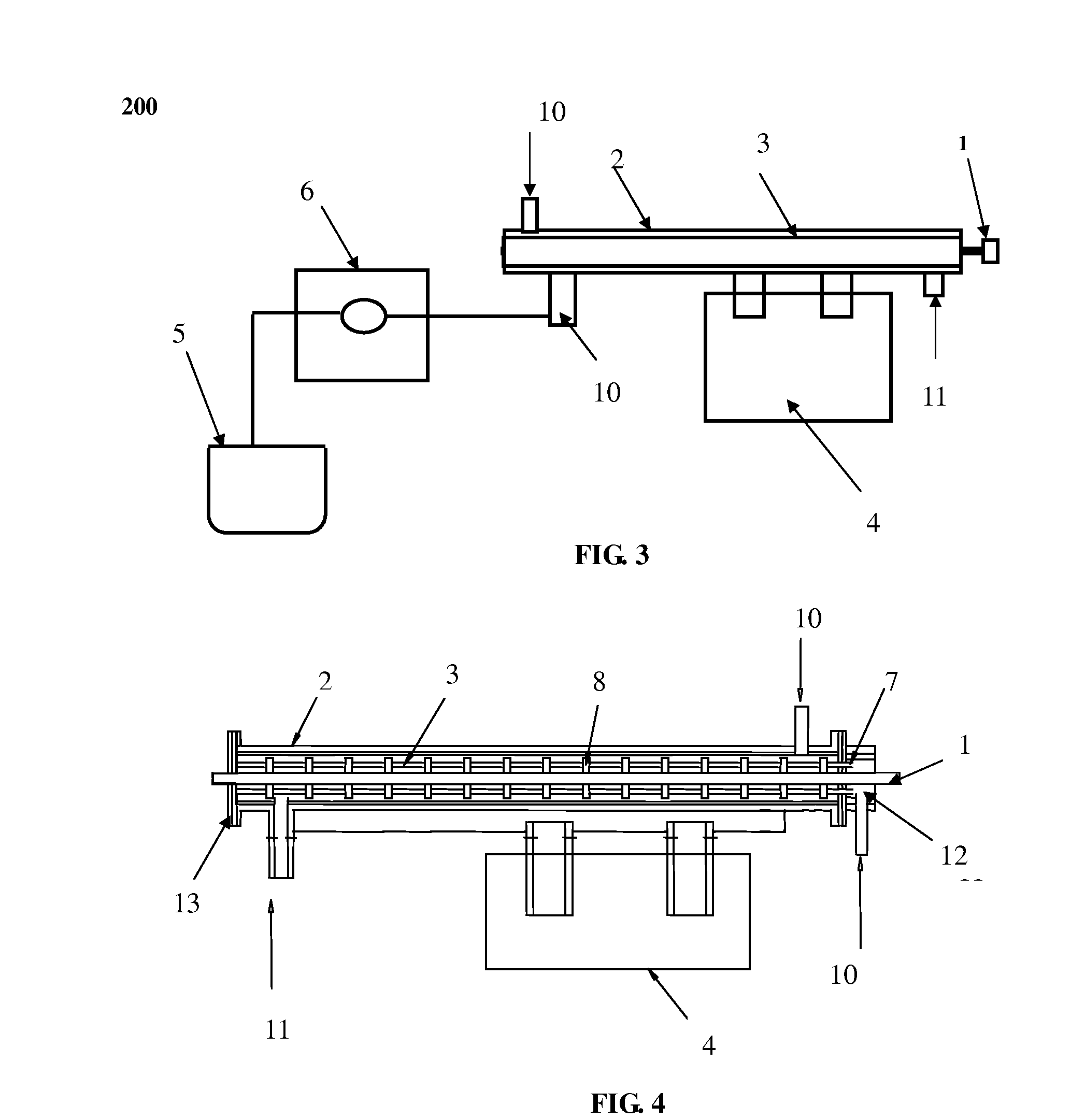Apparatus and process for metal oxides and metal nanoparticles synthesis
a technology of metal oxides and metal nanoparticles, applied in other chemical processes, oxygen/ozone/oxide/hydroxide, membranes, etc., can solve the problems of large nanoparticle size distribution, lack of precise control, and high equipment cos
- Summary
- Abstract
- Description
- Claims
- Application Information
AI Technical Summary
Benefits of technology
Problems solved by technology
Method used
Image
Examples
example 1
[0050]In this experiment, 51.2 g of Ce(NO3)3.6H2O and 14.6 g of ZrONO4 were dissolved in 300 ml distilled water and transferred into the batch reactor 2. The batch reactor 2 was dipped in an ultrasonic generator 4 at frequency of 60 KHz and temperature of 60° C. The rotate speed of the stirrer 1 is 100 r / min A desired amount of NH4OH solution was injected into the lumens of membrane micro-tube unit 3 at a constant rate of 0.2 ml / min by a measuring pump 6 and then diffused into the mixture solution of Ce(NO3)3.6H2O and ZrONO4 via the micro-holes on the wall of membrane micro-tube unit 3 until the pH=10 of the solution in the batch reactor 2. The precipitation of metal oxide precursor (hydroxid) occurred, yielding a buff color precipitate. The precipitate was filtered, washed with distilled water, and dried in air at 110° C. for 10 hours, and then calcinated at 550° C. for 4 hours, giving the products of Ce0.6Zr0.4O2 nanoparticles with particle size of 10 nm and specific surface area ...
example 2
[0051]In this experiment, 0.16 g of AgNO3 and 60 g of Polyvinyl Pyrrolidone (PVP, molecular weight is 30000) were dissolved in 300 ml distilled water and transferred into the batch reactor 2. 0.53 g of NaBH4 was dissolved in 30 ml distilled water and transferred into the container 5. The batch reactor 2 was dipped in an ultrasonic bath 4 at frequency of 120 KHz and the temperature of 60° C. At same time, NaBH4 solution was injected into the lumens of membrane micro-tube unit 3 at a constant rate of 1.2 ml / min by a measuring pump 6 and then diffused into the mixture solution of AgNO3 and PVP via the micro-holes on the wall of membrane micro-tube unit 3. The rotate speed of the stirrer 1 is 200 r / min. The Ag nanoparticles with size of 5-8 nm (FIG. 11) were produced with uniform size distribution, which is smaller than that produced by common chemical reduction of AgNO3 (FIG. 12)
example 3
[0052]In this experiment, 0.836 g of HAuCl4 and 24 g of Polyvinyl Pyrrolidone (PVP, molecular weight is 30000) were dissolved in 500 ml distilled water, and then transferred into the batch reactor 2. 1.16 g of NaBH4 was dissolved in 50 ml distilled water and transferred into the container 5. The batch reactor 2 was dipped in an ultrasonic generator (100 KHz) 4 at the temperature of 50° C. At same time, NaBH4 solution was injected into the lumens of membrane micro-tube unit 3 at a constant rate of 1 ml / min by a measuring pump 6 and then diffused into the mixture solution of AgNO3 and PVP via the micro-holes on the wall of membrane micro-tube unit 3, resulting the Au3+ reduction occurred. The rotate speed of the stirrer 1 is 150 r / min In the end of this process, the color of the solution turned to be wine-reddish color, giving the Au nanoparticles with quite narrow uniform size distribution. The average size of Au nanoparticles was 3.5 nm (FIG. 13).
PUM
| Property | Measurement | Unit |
|---|---|---|
| flow rate | aaaaa | aaaaa |
| length | aaaaa | aaaaa |
| size | aaaaa | aaaaa |
Abstract
Description
Claims
Application Information
 Login to View More
Login to View More - R&D
- Intellectual Property
- Life Sciences
- Materials
- Tech Scout
- Unparalleled Data Quality
- Higher Quality Content
- 60% Fewer Hallucinations
Browse by: Latest US Patents, China's latest patents, Technical Efficacy Thesaurus, Application Domain, Technology Topic, Popular Technical Reports.
© 2025 PatSnap. All rights reserved.Legal|Privacy policy|Modern Slavery Act Transparency Statement|Sitemap|About US| Contact US: help@patsnap.com



